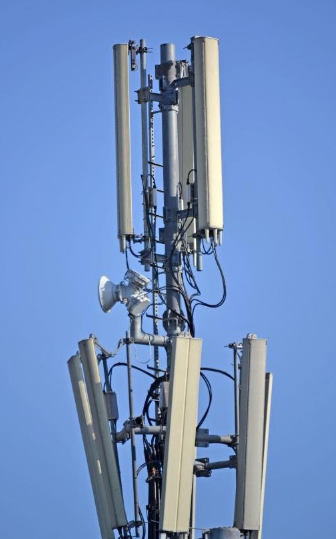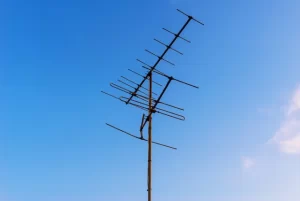Table of Contents
GSM Antenna
GSM antennas are devices for mobile cellular communication that operate in standard frequency bands, most often in both 900 MHz or 1800 MHz. The device’s function is to connect the mobile device to the communication network of the base transceiver station, thanks to which a person can make calls, send SMS, and use mobile Internet. For ease of use, these devices are usually built into mobile phones and tablet computers.
One of the features of GSM antennas is their incorporation into commonplace products, which is a concern for their small size. The antenna is usually small, not exceeding a few centimeters in length. The reason such antennas exist is that they can be mounted on portable devices designed for the general public. Since the GSM frequency band is adapted for use on this scale, the small size does not affect the quality of the device nodes’ operation.
The devices also differ in design and size owing to their usability. For example, the car’s antenna for receiving a signal is slightly larger in size and is adjusted for illumination over a longer distance, as it is vital to maintain a good connection when driving. Conversely, the antennas used in fixed GSM gateways are even more robust, ensuring that the user can still use the internet in isolated regions. It is also worth noting the low cost, as GSM antennas are among the most efficient ones and can be easily and widely installed in consumer devices. Antennas can be purchased for as little as 5 to 20 dollars, depending on the design and manufacturer.
The practical impact of GSM antennas is also worth examining. They perform well in an urban setting, where the landscape of high-rise buildings and dense infrastructure can interfere. Local GSM antennas and the devices’ design provide sufficient quality of communication in such circumstances. Technically, their gain is sufficient for a signal strength of 2-5 dBi in the city to be good, as the antennas are not designed to be placed more than 50 meters from the base transceiver station.

Microwave Antenna
Microwave antennas are designed to handle higher frequency ranges, generally from 1 GHz to 300 GHz. They are used for applications that need high-speed data transmission, such as broadband Internet and satellite communication. On the other hand, GSM antennas cover lower frequencies and are used for relatively short-range communication between cellular networks. Thus, microwave antennas are constructed to assist data transfers over long ranges and with relatively high capacity. Their design and size are determined by the need for precision and to be able to cover very long distances. Thus effects of the difference in size and shape can transmit certain ranges and strength of transmission. A good example of a microwave antenna would be a satellite dish since it has to be able to capture relatively weak signal transmission from satellites orbiting the earth.
An important application for microwave antennas is in radar technology. Air traffic control radars operate at frequencies on the order of 2.7 to 2.9 GHz. They require large, fixed parabolic antennas to track aircraft ranges from up to hundreds of kilometres. The gains of such antennas are on the order 30-40 dBi, so that even the signals being returned from tens of kilometres away are more than sufficient to accurately track a target.
Microwave antennas are indispensable for establishing reliable point-to-point communication links. Such links are used to connect network towers in remote regions, where no cables can be laid. Thus, the transmission output of these can be easily identified to be in the range of watts to kilowatts to ensure a stable link at range of tens of kilometre.these links also manifest in the higher output power, as in the case of radar systems.
Microwave antennas are orders of magnitudes more expensive than their GSM counterparts. A point to point microwave link will hamper a cost on the order of a few tens of thousands of dollars. This includes the supporting electronics in addition to the antenna of course. Thus microwave antennas are of great importance in terms of controlling the backbone of mobile and Internet networks.
Key Differences
The distinction between GSM and microwave antennas highlights their different roles and attributive differences in communication technologies. GSM antennas operate in the 900 MHz to 1800 MHz frequency range generation are designed to facilitate mobile communication. Thus, they create the necessary infrastructure for billions of mobile users worldwide to access the cellular network, enabling them to make phone calls, send text messages, and use basic internet services. The gain of these antennas is usually limited to around 5 dBi, which is ample for the short-and-medium communication distances in urban and sub-urban zones.
At the same time, microwave antennas operate across a variety of much higher frequencies, from 1 GHz to 300 GHz. These are critical for high-speed data transmission, which is imperative for high-speed broadband, satellite communication, and point-to-point links between the data points. The gain for such frequencies is often massive, exceeding 30 dBi, which is needed for satellites’ precision and long-range capacities. Moreover, the design and size difference is also noteworthy, as GSM antennas are small and can hardly be seen since they are put within the devices they serve in most cases. As a result, they do not require clutters and additional space. In comparison, microwave antennas, such as satellite dishes or radio towers, vary in size, but very substantial ones are relatively large and are propped high up—clearly to have a better line of eyesight with other antenna point.
The distribution and installation of the latter can be somewhat difficult and expensive, especially regarding monumental complexes like radar or larger satellite ground stations. Last but not least, the two types of antennas are also substantive in their cost difference. GSM antennas are relatively cheap—representative ones can be ordered for a few dollars each, especially when ordered in bulk since they are widely used in consumer electronics. At the same time, it is not uncommon for big high-quality microwave antennas and installations to carry price tags of tens of thousands of dollars sometimes. The latter are used in all manners of data transfer and TV transmissions.







